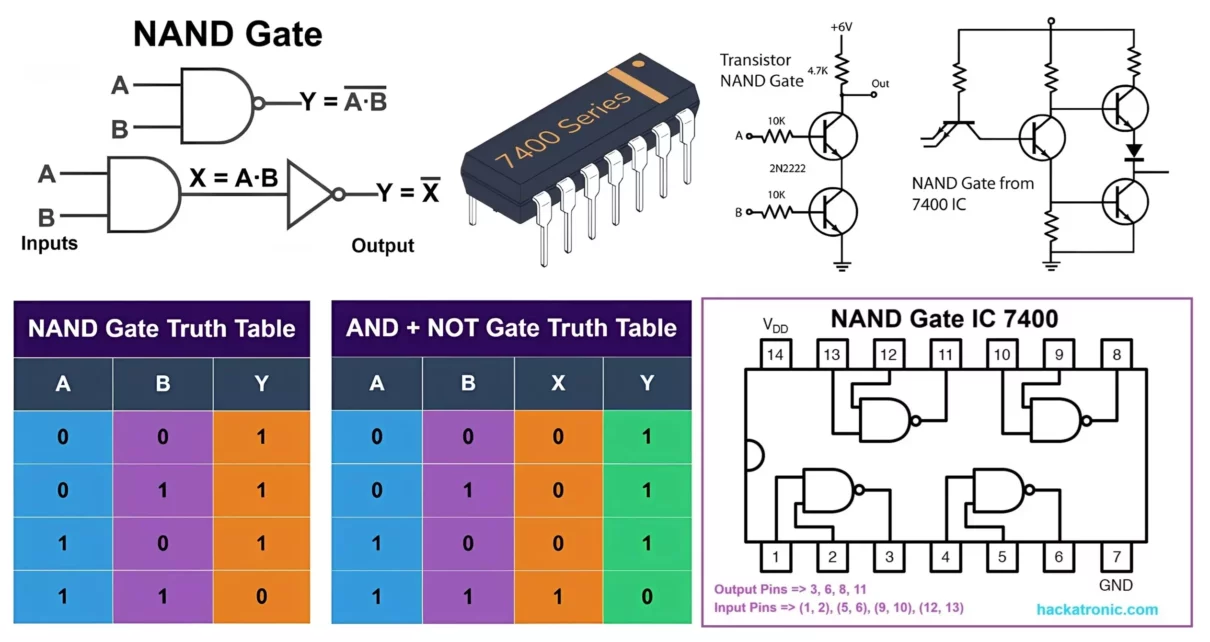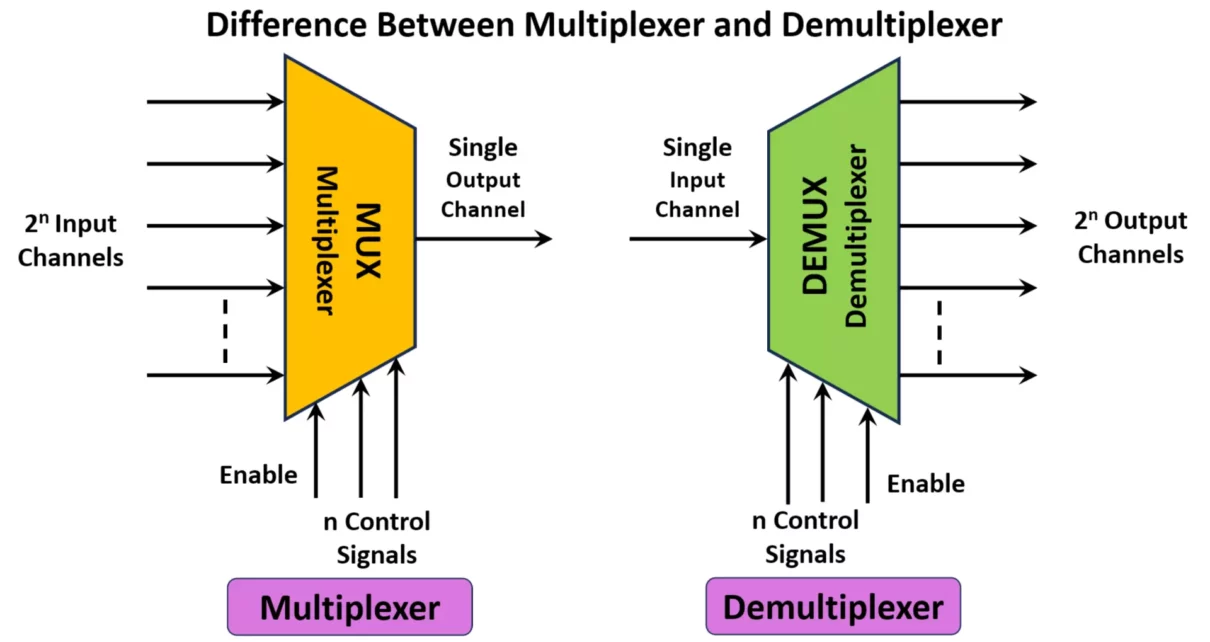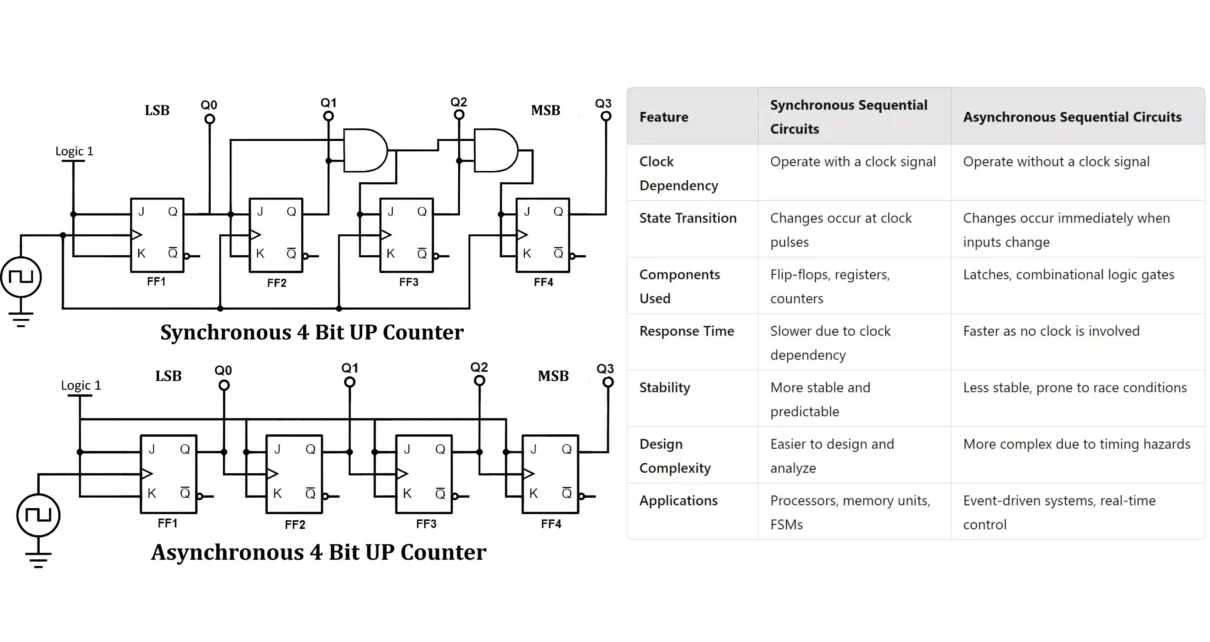Let’s explore the BCD Adder Circuit and learn how it adds decimal digits using Binary Coded Decimal (BCD), a digital coding system in which each decimal digit is represented using a 4-bit binary number. BCD arithmetic is widely used in digital systems where calculations must remain in decimal form, such as calculators, clocks, and display-based […]
Boolean Algebra
Universal NAND Gate Truth Table, Logic Circuit & IC 7400 Pin Diagram
Explore Universal NAND Gate from its truth table to its IC pin diagram, delve into transistor-based logic circuit construction and working, and discuss the advantages, disadvantages, and various applications of the NAND gate. Just as the NOR gate combines the OR and NOT functions to provide an inverted output when all inputs are low, the […]
Difference Between Encoder and Decoder with Applications
While they may seem like two sides of the same coin, encoders and decoders serve opposite but equally crucial roles. In this article, we’ll learn about difference between encoder and decoder with their types, pros and cons, real-world applications, and some of the most commonly used encoder and decoder ICs. In the world of digital […]
Difference Between Multiplexer and Demultiplexer with Types
Multiplexers (MUX) and Demultiplexers (DEMUX) are essential combinational logic circuits used in digital electronics for data transmission and communication systems. They play a crucial role in efficiently handling multiple signals by optimizing the usage of data lines, reducing hardware complexity, and enhancing the efficiency of data processing units. Let’s explore the difference between multiplexer and […]
Difference Between Synchronous and Asynchronous Sequential Circuits
Sequential circuits are of two types: Synchronous Sequential Circuits and Asynchronous Sequential Circuits. The difference between them is that synchronous circuits use a clock signal to control state changes, making them more predictable and easier to design. In contrast, asynchronous circuits do not rely on a clock and change states based on input signals, which […]
Half Subtractor and Full Subtractor: Circuit, Truth Table & Equation
In this article, we will discuss Half Subtractor Circuit and Full Subtractor Circuit with their working principle, truth table, equations, Karnaugh maps (K-map) and applications. Subtraction is a fundamental arithmetic operation in digital electronics, and logic circuits efficiently implement it. A subtractor is a combinational circuit that performs binary number subtraction in digital systems. These […]





